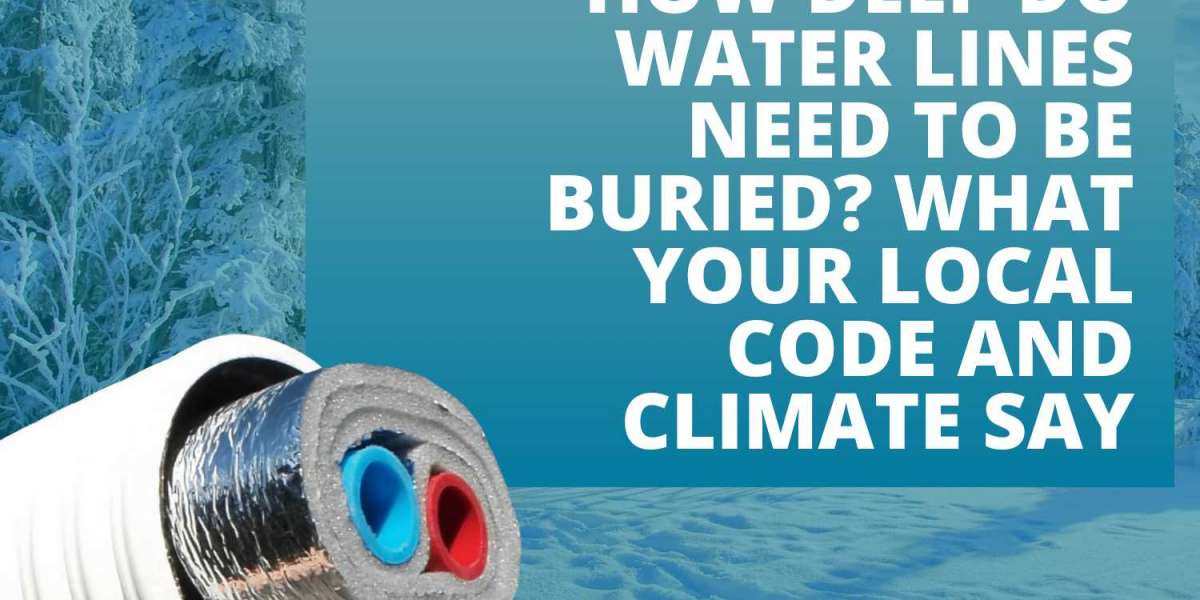Planning a heating system installation or upgrade? So how deep do water lines need to be buried for peace of mind — let alone to avoid costly freeze damage and code violations? As it turns out, the answer isn't as simple as you might assume—it's highly dependent on where you live, the climate in your area, and the local building codes, which can be drastically different from one town to another.
Messing up the burial depth can result in pipes bursting, costly repairs and lots of headaches when your heating system fails in the middle of winter. We’ve witnessed one too many homeowners discover that lesson the hard way after they failed to do the necessary research and their lines froze, shutting down an entire home-heating system.
Understanding the Frost Line and Its Importance
The frost line represents the deepest point where soil typically freezes during winter in your specific geographic location.This invisible line shifts drastically depending on your climate – up in northern Minnesota you may see frost depths of 5-6 feet down in the ground, whereas in southern Texas you might only see a few inches.
It is so important to know your local frost line because anything below this depth is generally safe from freezing for water lines (NOT sewer lines, or any other types of lines). Frozen pipes aren’t only an impediment to water flow — they also grow, burst and can cause thousands of dollars in damage while leaving you without heat at exactly the time you need it most.
Local Building Codes and Regulations
Most building codes require water lines to be buried at least 6 inches below the established frost line for your area, but this minimum can vary significantly between jurisdictions. Some areas with harsh winters mandate even deeper burial depths to account for unusually severe weather patterns that might push frost deeper than normal.
Here's what you need to know about code compliance:
- Contact your local building department for specific burial depth requirements
- Obtain proper permits before starting any water line installation work
- Schedule inspections at required stages to ensure code compliance
- Keep documentation of burial depths and materials used for future reference
The smartest approach is always checking with local officials before breaking ground—code violations can be expensive to fix and might affect your home's resale value or insurance coverage.
Climate Factors Influencing Burial Depth
Colder climates obviously require much deeper burial depths, sometimes exceeding 5 feet in northern regions where ground frost penetrates deep into the soil during extended winter periods. These extreme depths can make installation more expensive and complicated, but they're absolutely necessary for reliable operation.
Warmer southern regions might get away with burial depths of just 12-18 inches, though soil type and local microclimates can still affect these requirements. Sandy soils conduct cold differently than clay, and areas near large bodies of water or with significant tree cover might have different frost penetration patterns than open fields.
Practical Tips for Safe and Compliant Water Line Installation
Smart homeowners always dig slightly deeper than the minimum code requirement to provide extra protection against unusually harsh winters or unexpected ground conditions. This extra margin of safety costs very little during installation but can prevent expensive problems later when conditions exceed normal expectations.
When deep burial isn't practical due to rock, utilities, or other obstacles, proper insulation and heat tape become essential alternatives for protecting your water lines. Quality Best PEX fittings and materials designed for underground use also play a crucial role in system reliability, especially when you're dealing with challenging conditions and need to know how to prevent PEX pipes from freezing. Professional guidance ensures your installation meets all local requirements while providing the reliability your heating system demands, and proper coordination with your boiler thermostat settings helps maintain consistent temperatures throughout your entire system.
Conclusion: Get It Right the First Time
The question of how deep do water lines need to be buried doesn't have a universal answer—it depends entirely on your local frost line, building codes, and specific site conditions. Cutting corners on burial depth might save money upfront, but frozen pipes and code violations will cost far more in the long run.
According to the International Association of Plumbing and Mechanical Officials, proper burial depth is one of the most critical factors in preventing freeze damage to residential water systems (https://www.iapmo.org/). Take time to research your local requirements, consult with professionals, and always err on the side of going deeper rather than risking freeze damage that could disable your entire heating system.
Planning a water line installation for your heating system? OutdoorBoiler.com has all the professional-grade pipes, fittings, and insulation materials you need for a code-compliant installation. Our expert team can help you choose the right components for your climate and local requirements, ensuring your heating system stays reliable through even the harshest winters.
FAQs
How do I find my local frost line depth? Contact your local building department or check USGS frost depth maps for your specific geographic area.
Can I bury water lines shallower if I use insulation? Building codes typically require minimum depths regardless of insulation, though it may provide additional protection.
What happens if my water lines are buried too shallow? Shallow lines risk freezing, bursting, and causing expensive damage while potentially violating local building codes.
Do different pipe materials require different burial depths? Most codes specify burial depths based on frost line rather than pipe material, though some materials offer better freeze resistance.
Should I hire a professional for water line installation? Professional installation ensures code compliance, proper depth, and reliable long-term performance for your heating system.




